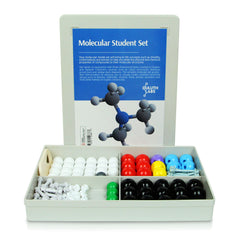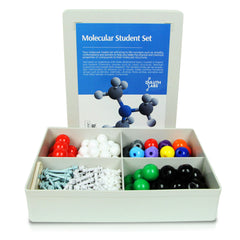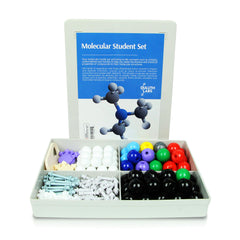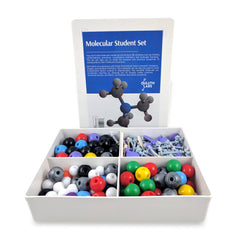Citric Acid: A Weak Acid with Flavor
Citric acid is an organic acid that is a component of all aerobic living organisms, it is most abundantly found in citrus fruits. This weak acid has been used as an additive in processed foods for more than 100 years as a preservative, a sour flavoring, or an emulsifying agent. Due to its effective preservative properties, citric acid can be found in most canned and jarred foods to prevent botulism. More than a million tons of citric acid are manufactured every year.
What does Citric Acid look like in Chemistry?
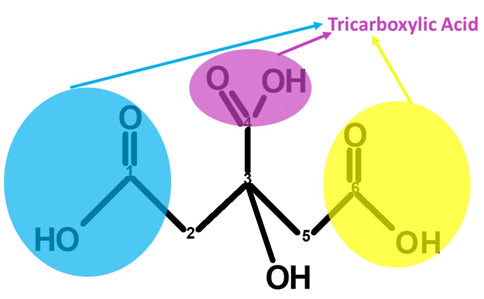
Let’s Get Building!
Using your Student Molecular Set from Duluth Labs then let’s create Citric Acid! You’ll need:
- 6 Carbon Atoms
- 7 Oxygen Atom
- 8 Hydrogen atoms
- 8 Small connectors (compact small bonds for hydrogen)
- 9 Medium Connectors
- 6 Long connectors
- Molecular Tool (for Disassembly)
Put aside all the atoms and connectors needed.
Let’s Start Building With Our First Carboxylic Acid Portion.

Let’s start!
Steps:
-
1

1. Get a carbon atom (Carbon 1) then attach an Oxygen atom to it using a medium connector. Add a Hydrogen atom to this oxygen using a small connector.
-
2

2. Then attach another Oxygen atom above Carbon 1 using 2 long connectors.
-
3
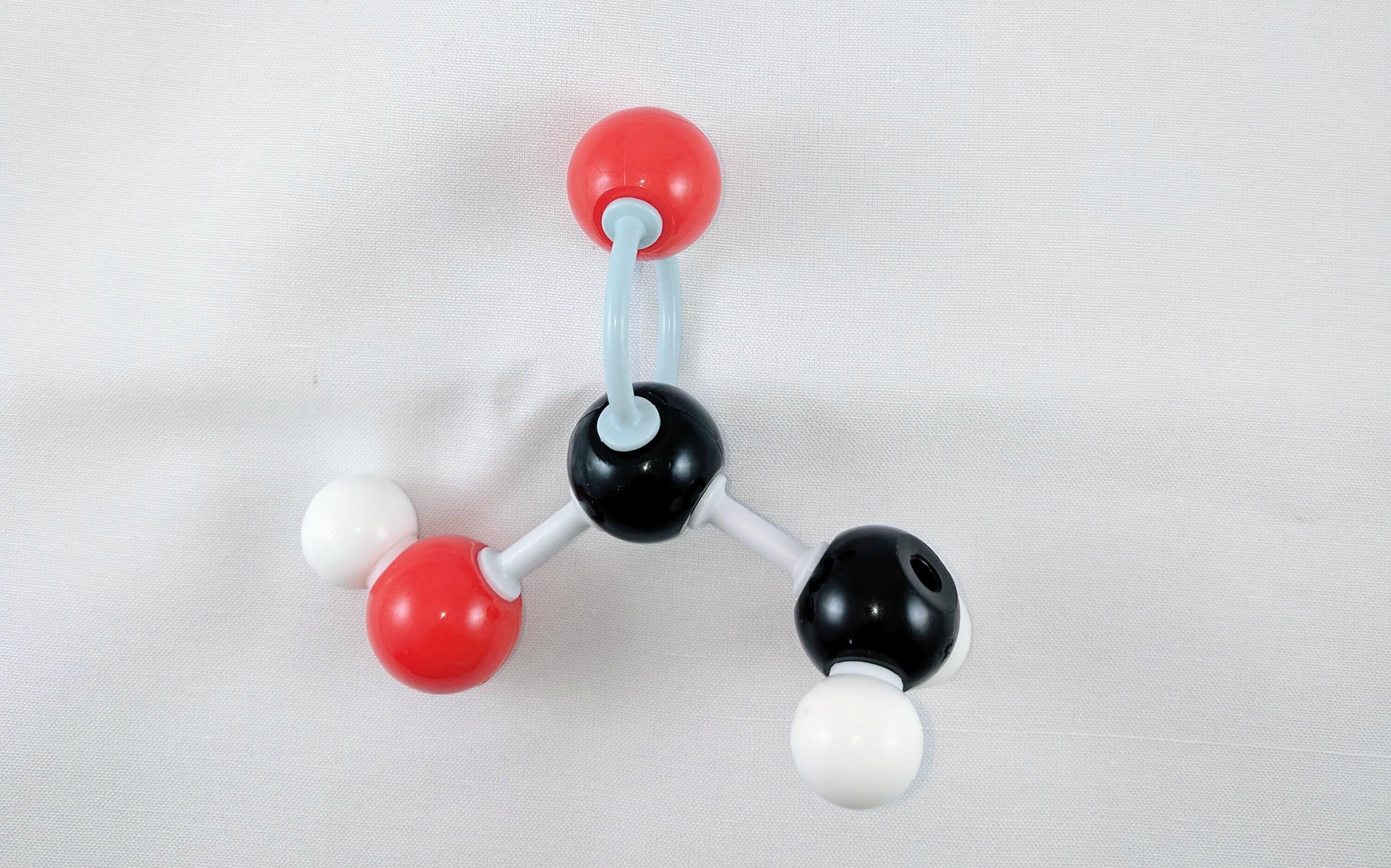
3. Get another carbon atom (Carbon 2) and attach this to Carbon 1 using a medium connector. Then, using 2 small connectors attach 2 Hydrogen atoms to Carbon 2.
-
4

4. Then, attach another carbon atom (Carbon 3) to Carbon 2 using a medium connector.
-
5

5. Attach one Oxygen atom below Carbon 3 using 1 medium connector. Then, place a Hydrogen atom on the oxygen using a small connector.
-
6
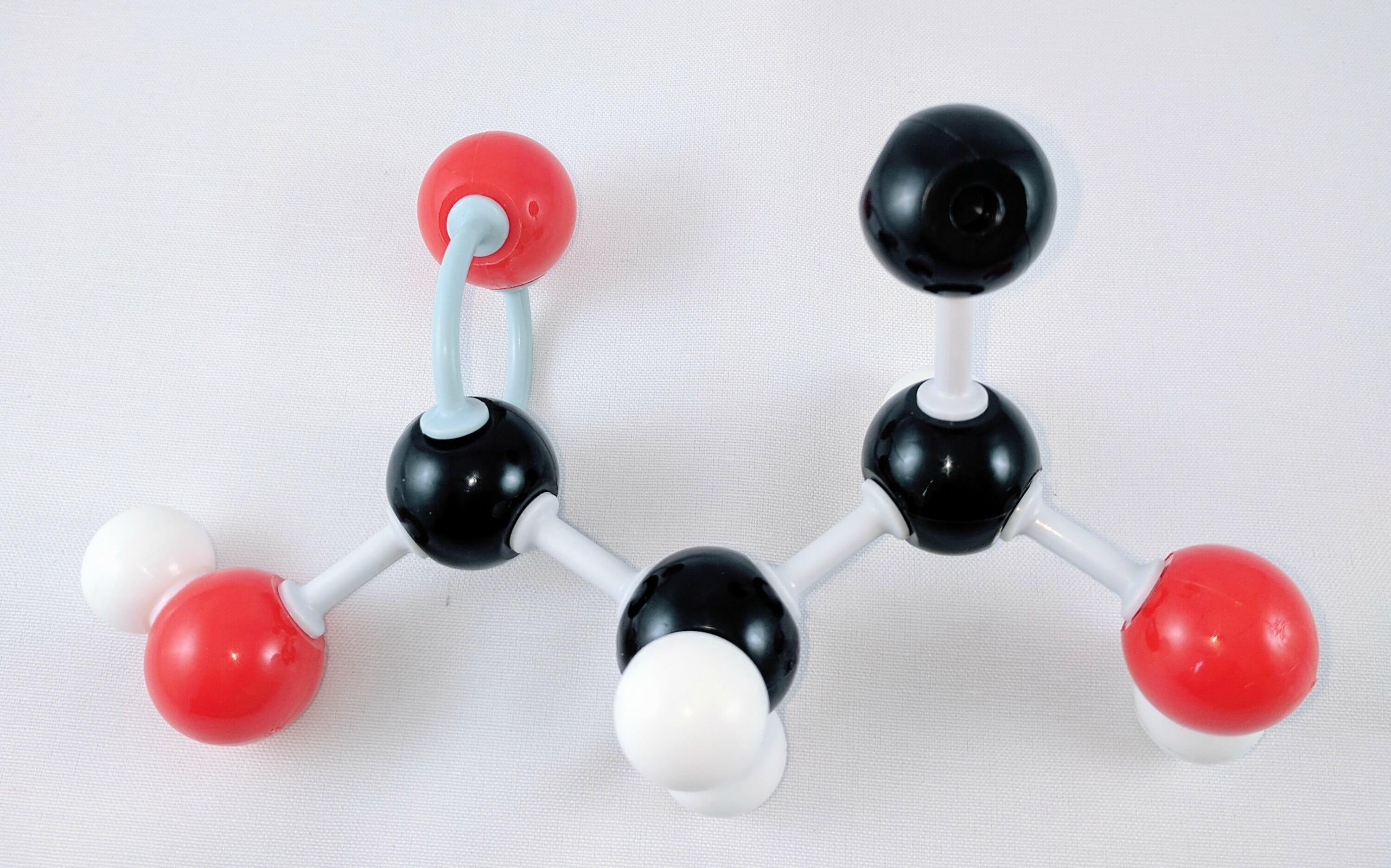
6. Add another carbon atom (Carbon 4) above Carbon 3 using a medium connector. Also, using a small connector attach a hydrogen atom on Carbon 3.
-
7

7. Get another Oxygen atom and attach it to Carbon 4 using 2 long connectors. Then, use a medium connector and attach another Oxygen atom to Carbon 4, add a Hydrogen atom to this Oxygen using a small connector.
-
8

8. Get another carbon atom (Carbon 5) and attach it to Carbon 3 using a medium connector. Then, using 2 small connectors attach 2 Hydrogen atoms to Carbon 5.
-
9

9. Attach another carbon atom (Carbon 6) to Carbon 5 using a medium connector. Then, using 2 long connectors attach an Oxygen atom to Carbon 6.
-
10
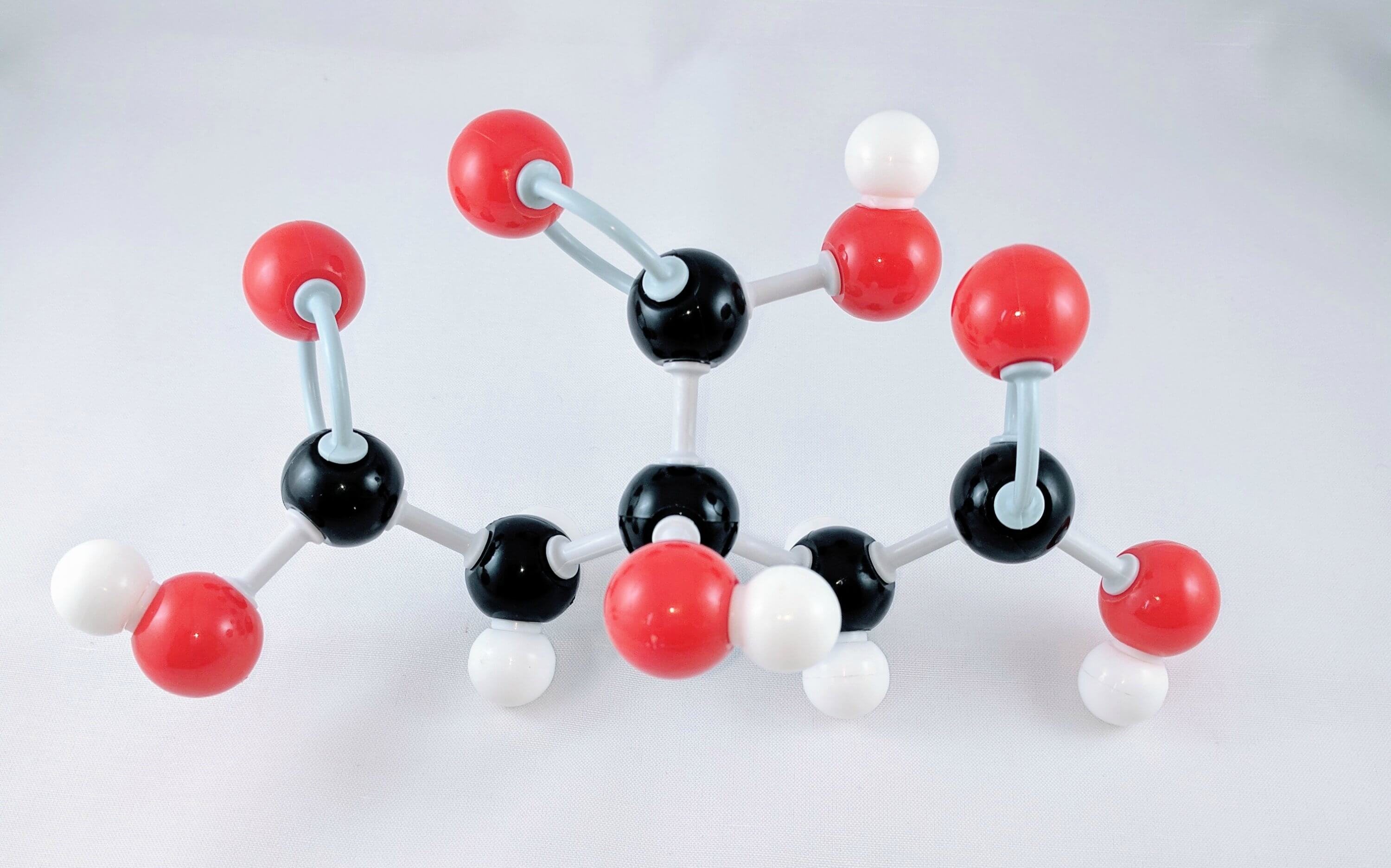
10. Finally, using a medium connector attach another Oxygen atom to Carbon 6 then, add a Hydrogen atom to the Oxygen atom using a small connector.
-

Yay! We've just built our Citric Acid Molecule!













